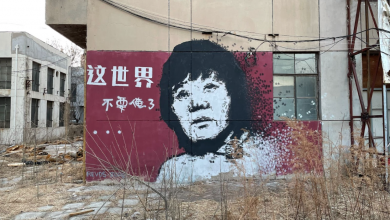Colonial Femicides: The Connection Between Economics and Violence
From the femicides in Juarez, to the disappearing Indigenous women of Canada, mass incidences of violence against women and specifically women of color continue to go unchecked and even supported through worldwide government inaction.
With such instances of widespread abuse, it becomes imperative to address and investigate all possible causes. One of which, is too often ignored; colonial economic interests. Various governments and corporations economically profit off of human rights violations (e.g. sweatshops), thus we must look at economics as a possible basis for the states continued refusal to respond to genocide.
Though each and every location listed deserves to have volumes written about the human rights abuses currently occurring there, this piece is attempting to correlate these various events under the common link of colonial economic interest. Therefore, although every country is evidently different in terms of political climate, governmental structures, and even the magnitude and the types of violence occurring there, each has a direct connection to economic policies that contribute to the continuance of such violence.
In order to properly explain, let’s start off with a case of genocidal economics right here in the US: the American settler colonialist laws and policies regarding Native peoples.
When Columbus crossed the Atlantic in 1492, he was under the impression that he had entered India. After some time, he eventually realized that he had actually “discovered” the “new world.” Both the assumption that this was India, and that he “discovered” anything were incorrect, as he could not have “discovered” a land that was already populated, and he also most definitely was not actually in India (though Indigenous populations from the Americas are oddly enough, still referred to as Indians).
Before his arrival, Indigenous populations were estimated to be around 10 million to 100 million strong (depending on the estimation). This European arrival marked the beginning of a genocide that continues to result in sterilization abuses, mass incarcerations, sexual violence, and medical experimentation on/against Native peoples. With current estimates marking Native populations at around 237 thousand people, we can see a great decrease in Native populations from the original estimates in the 1500s.
When attempting to address these mass instances of violence against specific communities, it becomes important to identify and analyze the causes of such violence so as to stop them from occurring.
Thus, we must not only ask who individually is committing these crimes (which though important only functions to prosecute the criminals, and doesn’t actually stop the crime from occurring – only from occurring again), but also how we can stop the violence before it actually occurs. This is where the state comes in. The laws regarding violence are supposed to act as a barrier to criminals. The implementation of such laws is supposed to safely protect citizens from being abused. However, what happens when the government economically benefits from crime? As Indigenous people go missing/murdered/raped, the US government gains more land and resources, thus what is motivating the US government to get involved? Only outrage and activism can force the government to care.
When the obvious benefactors of violence against women are those who will receive the land and resources of Native populations, it is up to the people to demand justice. When the profits/resources of the US government increases exponentially with the death of Native communities, it should come as no surprise when, in 1703, the Massachusetts Bay Colony offered sixty dollars for every Native scalp.
Later in 1753, it offered “130 Pieces of Eight [a type of coin], for the Scalp of Every Male Indian Enemy, above the Age of Twelve Years,” and “50 Pieces of Eight for the Scalp of Every Indian Woman, produced as evidence of their being killed.” According to James Welch, author of Killing Custer: The Battle of Little Big Horn and the Fate of Plains Indians, these strategic governmental programs, which sponsor the murder of Indigenous communities and even offer payment “money for scalps of women and […] children [when analyzed, these actions,] reflect the true intent of the campaign — to reduce Native populations to extinction or to smaller numbers so the Natives could not oppose European seizure of Indian lands.” As nineteenth century Colonel John Chivington said in regards to the extermination of Native peoples; “nits make lice.“
Thus, although men and women were both being murdered, women became specifically targeted for their reproductive abilities.
The slaughter and abuse of Indigenous peoples has been a direct result of colonist desire for resources. In other words, the Native peoples have had something the colonists want (land) so the colonists were able to get away with the murder and rape of Native peoples. Though individual people may be committing these acts of violence, it is through governmental sponsorship and inaction that these violent acts continue. And, as the government continues to profit off of the murder and rape of Indigenous women, the Federal government also continues to “prosecute virtually no cases of rape committed against Native women,” which they were required to do under the Major Crimes Act.
Currently, when we look at US policies/laws on Native peoples, we can clearly see that America is a settler colonialist state, whose major concern regarding Native peoples surrounds their land and supplies. For instance, Indigenous communities are the only group of peoples filed under the US Department of the Interior, a department which the government itself says functions to “protect America’s natural resources.” With the clear connection between Indigenous people and land resources, it again comes as no surprise that rates of violence against Native women are higher than the rates against any other group of peoples in the United States.
Therefore, when thinking about stopping violence, we must look at those who are profiting from it.
Though these issues are multifaceted and there is more than one way to advocate for change, we can use the idea that the state benefits from violence against specific communities to locate necessary policy changes.
As Toni Morrison, a feminist activist/writer suggests, “racism will disappear when it’s […] no longer profitable, and no longer psychologically useful.” At this moment it is still profitable to dispose of and abuse the bodies of people of color, and the violence thus continues on. However, with community outrage over the issue, the people can make it so that the government is forced to care and so that it is no longer in their best interest to avoid action.
Here’s more brief examples of the connection between murder and economics, as well as, capitalism and violence against women.
The Juarez Murders
Since the 1994 North American Free Trade Agreement (NAFTA), US companies have been able to export their factories (aka maquiladoras) across the border tax-free and with incredibly low labor costs. This has resulted in the exploitation of millions of Indigenous and Mexican women. Though many of these factories have now been shipped to Asia for even smaller production costs, the fact remains that companies continue to profit from human rights abuses.
Besides the horrible working conditions, maquiladora workers have also been disappearing in Juarez. Largely composed of a workforce from poor and rural areas, maquiladoras recruit young women who only require about fifty five dollars a week for their labor. The companies involved have said little about the disappearance, murder and rape of their workers.
Though accurate statistics are difficult to find, Amnesty International estimated in 2005 that 370 women had been murdered in Juarez. In the year 2010, prosecutor figures suggest that 247 more women were murdered in Juarez and in the next year (2011), 130 women were documented as murdered in Juarez. Though we do not have a holistic estimation of the number of deaths, we can now assume that this amount is well over 700 women.
In the same way that slavery in the US created a disposable population whose only worth was derived from their ability to perform manual labor, these cheap maquiladora work forces have become expendable and only of value for production purposes.
The violent atrocities committed against these women cease to matter (to the companies) the moment they become so easily replaced. The governments and the companies involved continue to profit off the exploitation of Mexican labor and thus deny and ignore these mass instances of violence against women. It becomes “easier” for them to deny the femicides and blame the victim than to risk losing money. With activist responses in the region, people have finally began to acknowledge the violence in Juarez (though it often written off as drug wars which completely ignores the gender dynamics of the crimes).
-
Documentary Senorita Extraviada or Missing Young Women
-
UCLA Professor Alicia Gaspar De Alba’s Desert Blood: The Juarez Murders (a historical fiction on the murders in Juarez)
-
Hollywood’s Bordertown (loosely based, though they do accurately state that “everybody is making too much money to give a shit about these women”)
-
Eve Ensler’s The Vagina Monologues has a piece on the violence against women in Juarez called “The Memory of Her Face”
Disappearing Women in Canada
For approximately 20 years, Indigenous women have been disappearing all over Canada. With about 1200 cases of either missing or murdered women and only about half of the murder cases against Indigenous women resulting in a charge (whereas the Canadian national clearance rate for murder is at 84%), these acts of violence are being tolerated by the national government. As Canada continues to callously disregard such mass instances of violence, we must ask the question; why does the Canadian government continue to ignore these crimes? Is it actually because these murders are unsolvable or is it because the government just doesn’t care? Is the government economically benefiting from the crimes (i.e. fewer Native peoples equals more government land and money)?
Indigenous populations have been rallying to fight government inaction on these crimes, and the goal is to cause such an uproar that it is no longer in the government’s best interest to avoid addressing this violence against Indigenous women.
If you want to know more about what is currently going on in Canada, watch the documentary Finding Dawn, or research/get involved with the organization Idle No More. Demand justice for the missing Indigenous women of Canada!
Crisis in the Congo
On May 7th, UCLA’s Native Roots: Violence, Power and the Pursuit of Justice, hosted a movie screening of the documentary Crisis in the Congo which discussed the “deadliest conflict since the Second World War.” It has been estimated that approximately 5 million Congolese people have been killed, as well as nearly fifty women raped every hour as a result of the conflict. This systematic rise of rape genders the conflict by instilling control through fear. Rape is being used as a tool of genocide and war, and also as a tool of profit.
Because of its vast deposits of untapped natural resources, materials from this region are now being referred to as “conflict minerals.” A mineral which, because of its link to consumerism and monetary value, has been a direct contributor to violence in the region. In other words, people are economically benefiting from the slaughter and rape of millions of Congolese peoples.
This violence, like in so many of the other cases, continues because of economic support.
Find out more about what is going on in the Democratic Republic of the Congo by reading this article and also watching the documentary Crisis in the Congo.
Though not all genocides have been based on economics, we cannot gloss over the significance of capitalism in these cases of murder, rape, and kidnapping. How many more people are going to die before we recognize that our economies produce mass genocide? We have to continue demanding for governmental acknowledgement and action. People are more valuable than money. The best interest of the state needs to change from monetary interest, to the collective well being of its people.
What can we do?
1) Make it economically disadvantageous for companies and governments to support human rights abuses.
Divest and Invest!
Take the initiative from divest movements where student activists around the country are attempting to have their universities divest tuition money from various companies that either harm the environment or that violate human rights. Specifically students have targeted fossil fuel industries and also companies that enable and benefit from human rights violations against Palestinians. The idea is that the consumer has the power to create our market. Vote with your dollar!
Whether to raise awareness of the cause, or to financially impact the various industries, divestment can make a powerful statement that we take these human rights violations seriously.
In terms of investing our money, buying used is always an option, but if that doesn’t work for all your materialistic needs try downloading the app Buycott. This app allows you to scan labels on food, clothes, etc and lets you cross check for specific campaigns (ie not using conflict minerals). Also check out this consumer action guide and support the companies who are committed to accessing raw materials without contributing to violence in the Congo.
By investing in products that support human rights around the globe, we send the message that we will only buy from companies as long as they do not violate human rights around the globe.
Unfortunately, we only really divest from companies, and thus we cannot divest from the Canadian and US governments (at least without becoming criminals by avoiding taxes) for their colonial atrocities. Though we can see the connection to economics, divesting wouldn’t really be possible. However, if we look at the divestment campaigns as not only a financial form of activism, but also as a primary way to spread awareness for these abuses, we can assert that raising awareness through protests and campaigns can also function to force the governments to respond.
2) Support/Join an organization
3) Educate others
People are not objects for purchase. We live under a nation and in an economy that is soaked in blood. We must refuse to continue selling human bodies and lives for profit.
Let’s scream so loudly that governments will be forced to respect people as humans and not expendable objects of labor and resources.





Wow, Cori, inspirational! I knew about some of this in the abstract, but your article showed me a “bigger picture”. Offering additional resources and links was also very helpful. Hope to see you next time up here! <3
Have you seen the Horror film “Pin”? Its Creepy!